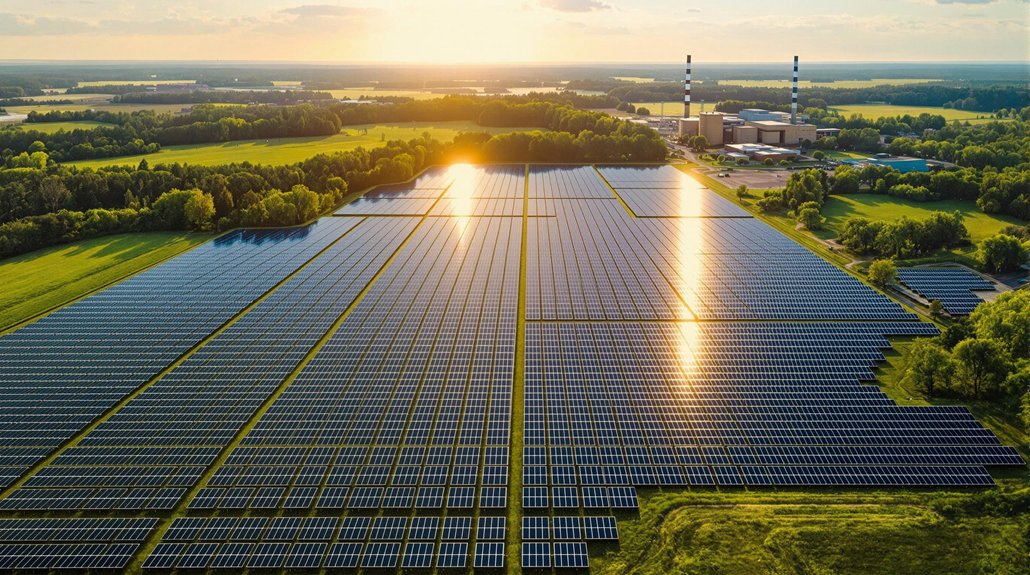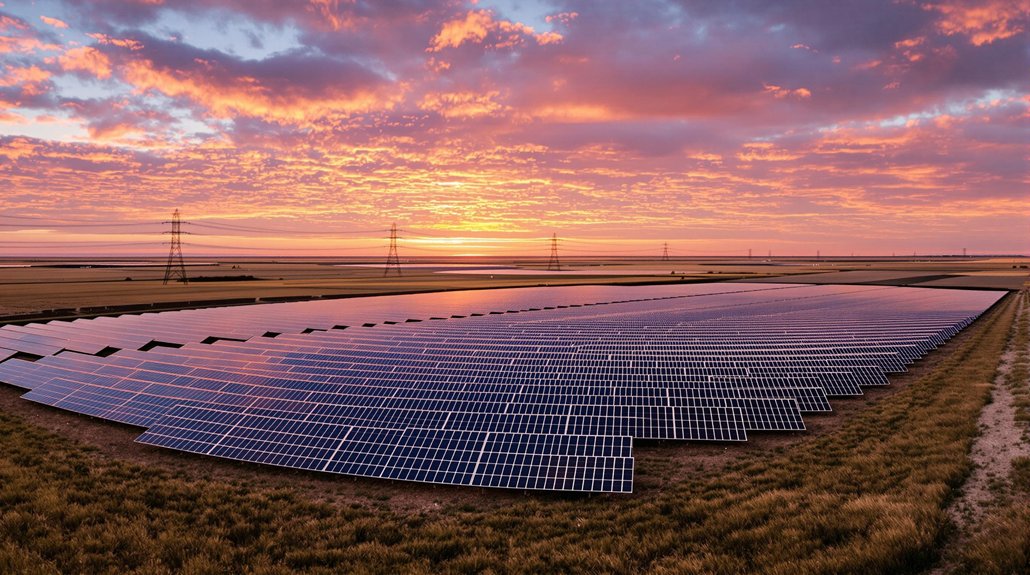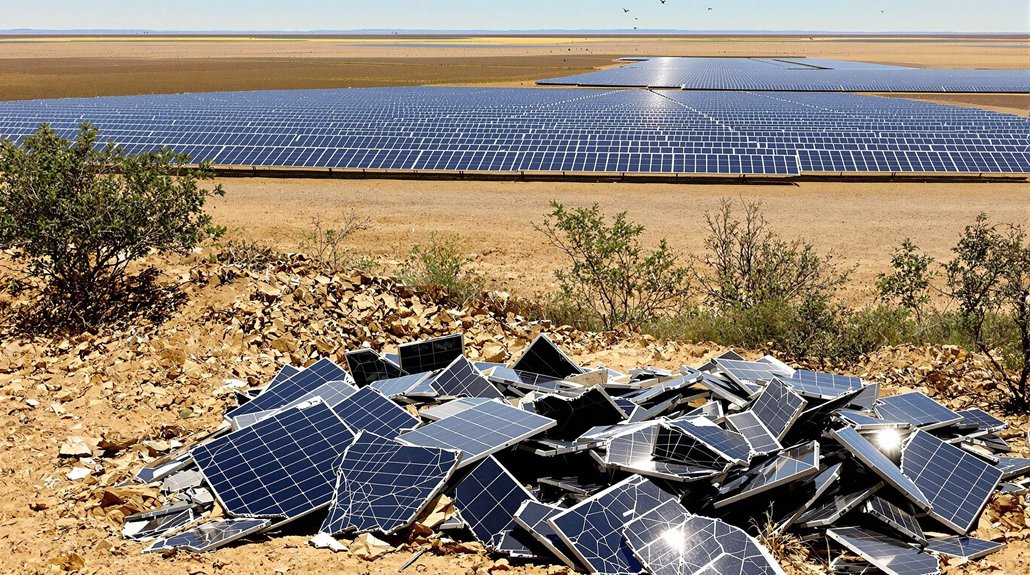Alabama’s solar potential is finally getting attention. With over 210 sunny days yearly, the state could generate 50,000 megawatts of solar energy—enough for millions of homes. Recent approvals for 2,400 megawatts of renewables signal a shift from fossil fuel dependence. Corporate players are jumping on board through subscription programs and renewable credits. Jobs, lower costs, and environmental benefits await. Alabama’s clean energy transformation might just transform the Cotton State into a solar powerhouse.
While fossil fuels have long dominated Alabama’s energy landscape, the Heart of Dixie is finally making moves toward a greener future. Executive Order 33 established statewide energy efficiency goals, and the Alabama Public Service Commission recently authorized 2,400 megawatts of new renewable resources within the next six years. About time, honestly.
Alabama averages over 210 sunny days annually. That’s a lot of untapped potential just baking down on cotton fields and football stadiums. Yet somehow, solar power remains a minimal portion of the state’s energy mix, lagging embarrassingly behind neighbors like Georgia and Florida. The Solar Energy Industries Association reports Alabama could technically produce nearly 50,000 megawatts via solar. Enough to power millions of homes. Millions!
Things are changing, though. Alabama Power’s Renewable Generation Certificate program has approved 480 megawatts in solar projects since 2021. More are coming. The Renewable Subscription Program now lets businesses support solar facility construction in exchange for credits and certificates. It’s not charity—it’s smart business.
This alteration could be an economic gold mine. Solar expansion offers lower consumer power costs and attracts clean-energy-dependent industries. The automotive sector—Mercedes-Benz, Hyundai—would benefit from affordable green electricity. Jobs in installation, maintenance, and manufacturing would follow. Alabama might even become an energy exporter. Imagine that.
There’s an environmental bonus too. Current thermoelectric power plants—coal, gas, nuclear—gulp down 80% of the state’s water withdrawals just for cooling. Solar and wind? They barely sip. Governor Ivey’s recent proclamation of Clean Energy Week in Alabama signals growing recognition of renewable energy’s importance. Technological advancements have significantly improved how efficiently we can capture solar energy, making it an increasingly viable option for Alabama’s energy future. These improvements have led to dramatic cost reductions similar to what South Africa has experienced with their renewable energy sources.
Large corporations can now purchase Renewable Energy Credits to meet sustainability goals or join subscription programs. Companies in the EV supply chain are already eyeing Alabama’s clean electricity potential. The state’s strategic plans aim to evolve from coal and natural gas toward renewables, aligning with global trends.
It’s not exactly a transformation yet. But for a state where coal was king? It’s a start.
References
- https://www.alabamapower.com/clean-energy.html
- https://adeca.alabama.gov/wp-content/uploads/The-National-Governors-Associations-Advancing-Clean-Energy-Report.pdf
- https://alabamarivers.org/alabama-tiptoes-towards-clean-energy/
- https://poweralliance.org/2025/03/31/alabamas-path-to-energy-leadership-embracing-solar-power-for-affordable-power-cleaner-air-and-economic-growth/
- https://businessfacilities.com/renewable-energy-on-the-clean-energy-frontier/







